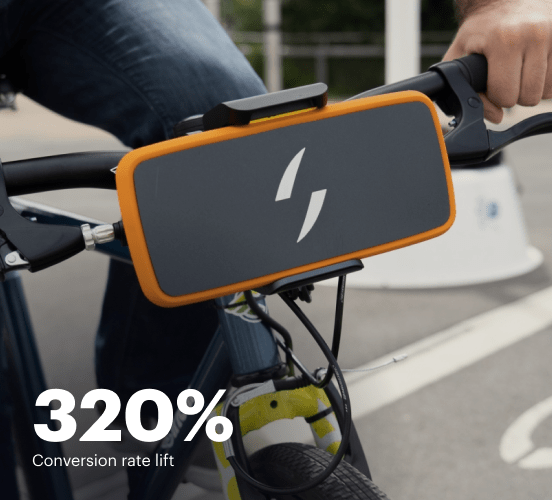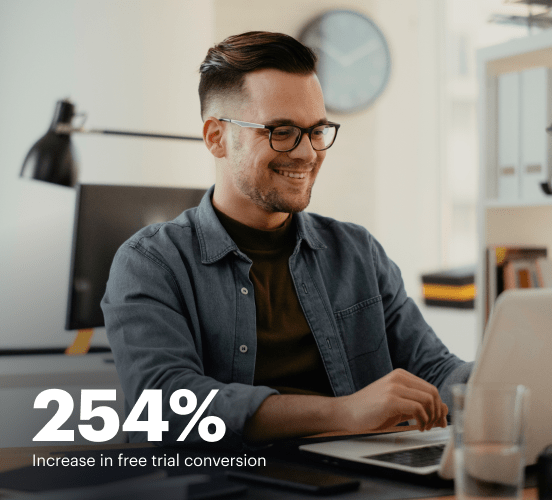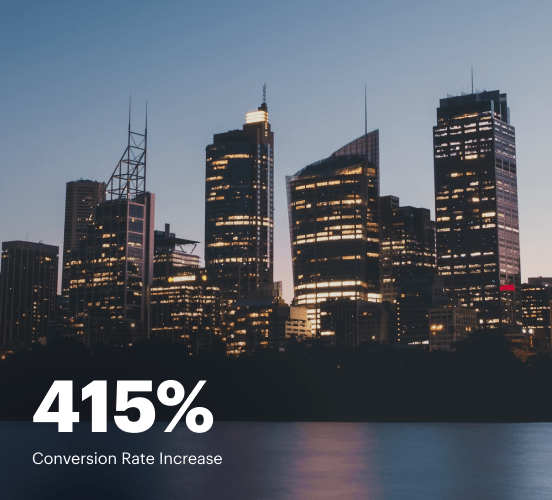Shopify vs. Formsite: the best platform for a seamless web experience
Discover how Shopify compares to Formsite regarding features and usability. Find out which platform provides the competitive advantage your business deserves.
Get startedSee how Instapage stacks up against the competition
| Feature | Instapage | Other builders |
| Drag-and-Drop Tools | ||
| Conversion-optimized templates | ||
| Manual and AI-powered A/B Tests | ||
| AI content suggestions | ||
| Popups and sticky bars | ||
| Canvas and grid blocks | ||
| Reusable and global elements | ||
| Form and popup builders | ||
| Built-in Heatmaps | ||
| Central analytics dashboard | ||
| Ad-to-page personalization and collections | ||
| Contacts, lists, and email | ||
| Dedicated, full-service CRO experts | ||
| Enterprise-ready platform |
Leading the way in building high-performing landing pages





Why Instapage is the smarter choice for your campaigns
Get everything you need to build, scale, and optimize high-converting landing pages—without coding.

Easier page building without coding
Instapage offers a flexible and seamless page creation experience with a library of 500+ conversion-focused layouts, Instablocks®, a drag-and-drop builder, and AI content generation. With technologies like Thor Render Engine®, you can create on-brand, mobile-responsive landing pages that load quickly and start converting during initial visitor clicks.

More insights — better results
Instapage lets you see in detail how each landing page experience and variation is performing so you can make targeted changes that boost page conversions. Use heatmaps for a better understanding of on-page activities, run A/B tests and AI-assisted experiments, and then track and evaluate results within robust analytics dashboards.

More personalized experiences
Instapage lets you quickly create high-performing landing pages tailored to each of your ad campaigns. Deliver personalized experiences for distinct audiences using dynamic text replacement. Effortlessly align specific advertisements to unique pages with AdMaps. Monitor audience-level metrics using our advanced data tools.

Built-in collaboration
Instapage collaboration capabilities bring your entire team together to speed up the process of landing page review, approval, and launch. No more frustrating and unnecessary revisions or edits scattered across emails. Provide instant feedback, conduct real-time page edits, and securely share your pages with outside stakeholders.

Free up time for your business
Invest time into business growth, not busy work. Launch landing pages faster with reusable forms and templates. Build once, reuse forever.
Explore all integrations






Easier page building without coding
Instapage offers a flexible and seamless page creation experience with a library of 500+ conversion-focused layouts, Instablocks®, a drag-and-drop builder, and AI content generation. With technologies like Thor Render Engine®, you can create on-brand, mobile-responsive landing pages that load quickly and start converting during initial visitor clicks.
More insights — better results
Instapage lets you see in detail how each landing page experience and variation is performing so you can make targeted changes that boost page conversions. Use heatmaps for a better understanding of on-page activities, run A/B tests and AI-assisted experiments, and then track and evaluate results within robust analytics dashboards.
More personalized experiences
Instapage lets you quickly create high-performing landing pages tailored to each of your ad campaigns. Deliver personalized experiences for distinct audiences using dynamic text replacement. Effortlessly align specific advertisements to unique pages with AdMaps. Monitor audience-level metrics using our advanced data tools.
Built-in collaboration
Instapage collaboration capabilities bring your entire team together to speed up the process of landing page review, approval, and launch. No more frustrating and unnecessary revisions or edits scattered across emails. Provide instant feedback, conduct real-time page edits, and securely share your pages with outside stakeholders.
Free up time for your business
Invest time into business growth, not busy work. Launch landing pages faster with reusable forms and templates. Build once, reuse forever.
Explore all integrationsGet started with Instapage in a few steps
-
Create your Instapage account
Start with Instapage by signing up via Google or your email. You'll get access to a free 14-day trial to discover Instapage capabilities. Feel free to cancel anytime during the 14-day trial if you decide that our product is not suitable for your business. -
Build and personalize your page
Create your first landing page from scratch or choose a template from 500+ customizable layouts. Use the drag-and-drop builder to add page elements, fonts, and backgrounds, refine content with AI, or add custom HTML, Javascript, and CSS. -
Review and make edits
Collaborate on page designs and streamline review processes. Invite your team members and stakeholders to review, edit, and provide feedback on your landing page. Collaborate knowing your page is confidential and only accessible to authorized users. -
Publish and track page performance
Publish your page to a domain or custom URL. Connect your pages to the ads you've created and track page performance within the analytics dashboard, run A/B tests and AI experiments, analyze results, and continuously optimize your landing page to maintain high conversions.
Shopify vs. Formsite: Navigating the Marketplace Showdown
In a world where eCommerce and online forms compete for our attention, choosing the right platform can feel like stepping into a boxing ring. Shopify and Formsite are two heavyweights that have carved out substantial niches, but as any seasoned fighter knows, it’s essential to understand what each contender brings to the table. This article takes a deep look into the unique strengths and weaknesses of each platform while throwing in a wildcard – Instapage – that could very well change the rules of engagement. Whether you’re setting up an online store or designing complex forms, your choice of platform could determine your success or struggle. Buckle up as we dive into this competitive arena where functionality meets intuition and power meets simplicity. By unpacking key features, usability, performance, support, pricing strategies, and finally introducing a surprising third contender, our goal is to equip you with the knowledge to make the perfect choice.
Introducing the Contenders
First up is Shopify, a titan in the eCommerce universe that is known for its robust store management features and sleek templates. With the ability to cater to businesses of all sizes, Shopify offers a pathway for budding entrepreneurs and established merchants to showcase their products. It’s got a reputation for being user-friendly, making it easier for people without extensive tech knowledge to set up their online storefronts and manage sales seamlessly. Meanwhile, on the opposite side of the ring is Formsite, a versatile platform aimed predominantly at those who need to create forms and surveys. Its ability to collect data efficiently distinguishes it from the rest, and with an impressive selection of customization options, it caters to businesses looking for tailored solutions for their information gathering needs. Tucked away in the corner, watching and waiting, is Instapage, a rising star known for its landing page capabilities. But more on that later. For now, let’s dig into what each platform can offer.
Feature Face-Off: What’s Inside the Box?
When it comes to features, both Shopify and Formsite come loaded, each with a distinct arsenal that serves their audience well. Shopify shines with its inventory management and integrated payment gateways, presenting a complete solution for eCommerce. Users can enjoy customizable templates that not only look stunning but also help convert visitors into customers. On the other hand, Formsite specializes in form building, producing user-friendly interfaces that streamline the survey process. With options for conditional logic and various question types, it allows businesses to create complex forms without needing advanced technical skills. And while these two powerhouses fight it out, don’t forget that Instapage is backstage, offering specialized options that make it a formidable opponent in terms of landing page optimization. As we continue, keep in mind that both platforms offer strong suits; the biggest question is which one fits your specific needs best.
Usability Unleashed: The User Experience Report
Navigating Shopify and Formsite feels like cruising down two different lanes. Shopify is designed for users who may not be familiar with web design principles, providing intuitive drag-and-drop features that make building a store a walk in the park. The learning curve is smooth, steering new users through essential functions that empower them to manage their stores effectively. Contrasting this is Formsite, which is straightforward in its simplicity when it comes to forms. While the platform does have extensive customization options, the interface ensures that building a form is as easy as pie for users of all skill levels. Imagine the learning curve being less of a steep hill and more of a gentle slope; both platforms do a commendable job of keeping frustration at bay. Of course, there’s Instapage, with a user-friendly interface that specializes in streamlining landing page creation, adding another layer of accessibility to the mix.
Shopify's Feature Highlights
- Comprehensive inventory management tools
- Integrated payment gateways for seamless transactions
- Sleek, customizable storefront templates
- Powerful SEO capabilities to enhance discoverability
- Mobile-responsive design options
Formsite's Key Features
- Intuitive form-building tools with drag-and-drop functionality
- Conditional logic capabilities for personalized forms
- Robust reporting features for analyzing data
- Secure data collection with customizable compliance options
Common Strengths of Shopify and Formsite
- User-friendly interfaces that cater to all skill levels
- Responsive customer support options
- Customization capabilities to fit brand needs
- Integration with various third-party applications
- Reliable uptime and performance for effective realization
- Secure hosting environments
It's clear that both Shopify and Formsite have their strengths, but let’s not forget Instapage, lurking like a crafty challenger. Known for its landing page optimization features, Instapage might offer the best of both worlds, providing robust functionality and exceptional user experience without the complexities seen in some features of the other two platforms.
Performance Showdown: Speed and Responsiveness
When we talk performance, speed becomes the supreme champion. Both Shopify and Formsite understand the necessity of quick loading times and mobile responsiveness in a world that demands instant gratification. Shopify’s dedicated servers ensure that your eCommerce site loads swiftly, while its mobile templates guarantee a seamless experience across platforms. Formsite also prioritizes speed, optimizing its forms so that users can collect data without delay. Picture slow-loading pages like a traffic jam during rush hour; frustrating and unnecessary! Users want responsiveness, especially when they’re ready to make purchases or fill out forms. Both platforms try to deliver speed, but which one can sustain that momentum in real scenarios? That’s the real question that speaks volumes about their reliability.
Support System Round: Who's Got Your Back?
In any competitive ring, having a solid support team is essential. Shopify's support channels include 24/7 customer support via live chat, email, and an extensive knowledge base filled with how-to guides and forums. Whether you encounter a minor hiccup or have a more substantial issue, help is just a click away. Formsite, on the other hand, offers a variety of support options, including email support and comprehensive user documentation. Think of the support teams as your loyal corner men, ready to jump in and assist whenever a fight gets tough. A platform can have all the features under the sun, but if you’re stuck without help, you might as well be in the ring alone.
The Pricing Showdown: Cost vs. Value
Advantages of Shopify's Pricing Strategy
- Tiered pricing plans catering to different sizes of businesses
- No hidden fees for basic transactions
- 30-day free trial to test functionalities
- In-depth analytics included in plans
Advantages of Formsite's Pricing Strategy
- Flexible pricing that grows with your needs
- Customized billing options for larger scale operations
- Pay-as-you-go features minimizing upfront costs
- Free trial period allowing you to gauge usability
As we examine the pricing structures, Shopify and Formsite present clear value propositions, offering tiered plans that can match various business demands. Yet, when we factor in Instapage's flexible and transparent pricing model, it begins to shine as a more streamlined and valuable option that integrates seamlessly with marketing strategies.
Both Shopify and Formsite come with their own pricing plans, offering a range of features for diverse needs. Finally, it’s essential to remember that sometimes the unexpected costs can be hiding in the least anticipated places, so now is the time to look closely at what each platform offers before making your choice.
Meet the Underdog: Instapage
Instapage isn’t just the underdog in this contest; it’s the dark horse with unique advantages that set it apart. With a laser focus on optimizing landing pages, Instapage allows for easy A/B testing and seamless integrations with ad platforms, ensuring marketers can turn traffic into conversions effortlessly. The platform specializes in building high-quality landing pages designed for maximum impact, providing templates that can be customized in-depth without the need for coding. For businesses looking to supercharge their marketing efforts, Instapage presents itself as the secret weapon they didn’t know they needed. Its ability to bridge a gap between intent and action makes it a worthy consideration in this arena.
In conclusion, while Shopify and Formsite have their advantages, choosing the right platform ultimately boils down to individual business goals and resources. It’s about finding the right fit that aligns with your vision. Take the time to explore these contenders and consider how Instapage might offer the additional support you need on your marketing journey. An informed choice can lead to incredible successes down the line.










